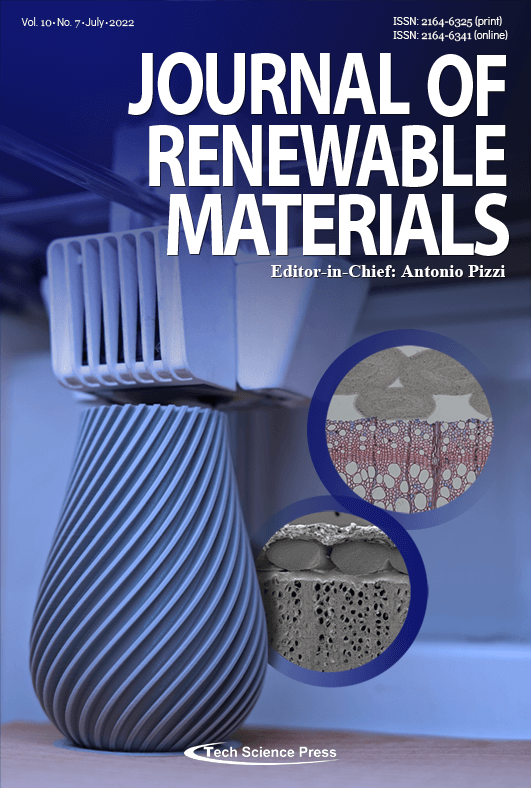A New DOPO-Eugenol Adduct as an Effective Flame Retardant for Epoxy Thermosets with Improved Mechanical Properties
Daqin Zhang1,2, Chufeng Yang3, Huayang Ran1,2, Juanli Wang1,2,*, Jintao Wan1,2,*, Yuhu Li1,2, Pujun Jin1,2, Daodao Hu1,2
Journal of Renewable Materials, Vol.10, No.7, pp. 1797-1811, 2022, DOI:10.32604/jrm.2022.018754
- 07 March 2022
(This article belongs to the Special Issue: Bio-based Halogen-free Flame Retardant Polymeric Materials)
Abstract The development of efficient green flame retardants is an important way to realize more sustainable epoxy
thermosets and downstream materials. In this work, a monoepoxide is synthesized through O-glycidylation of
eugenol, and then reacted with DOPO (9,10-dihydro-9-oxa-10-phosphophenanthrene-10-oxide) to obtain a
new bio-based flame retardant, DOPO-GE. DOPO-GE is blended with a bisphenol A epoxy prepolymer exhibiting good compatibility and DDS (4,4′-diaminodiphenylsulfone) is used as the curing agent to afford epoxy thermosets. Although DOPO-GE leads to the reduced glass transition temperature of the thermosets, the storage
modulus increases considerably. The DOPO-GE-modified thermosets exhibit the high thermal stability… More >
